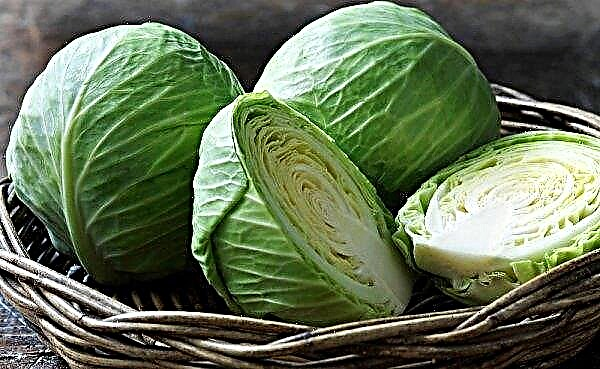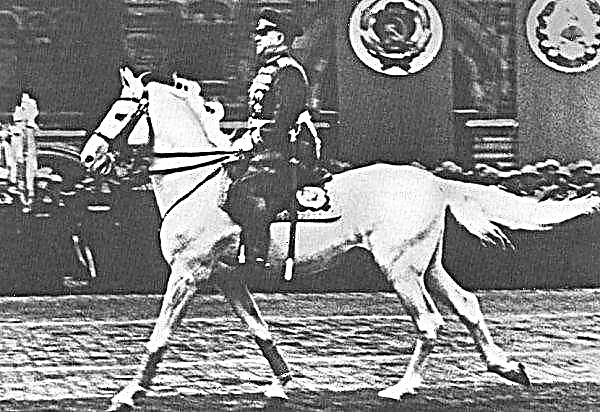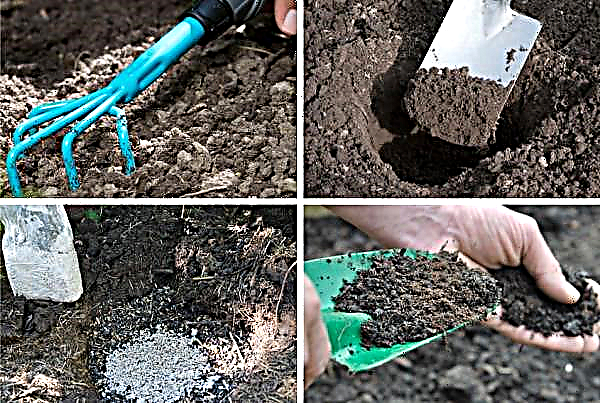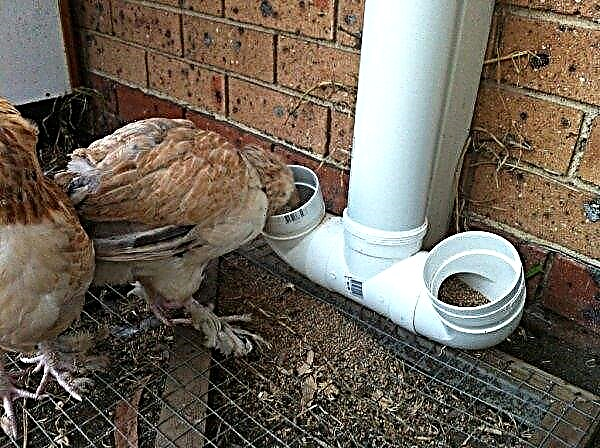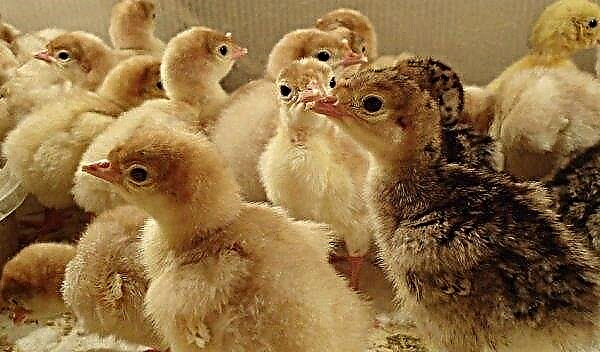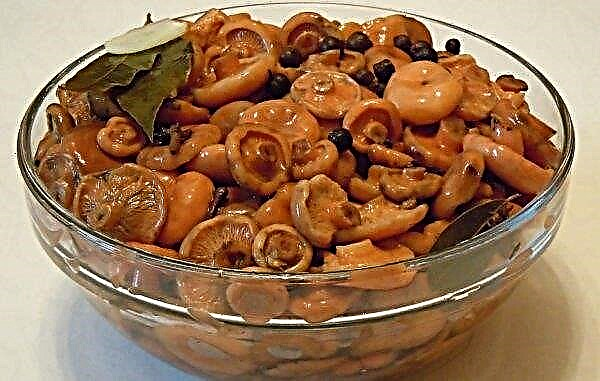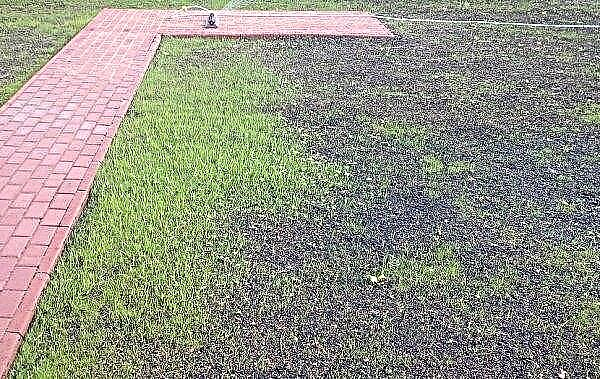Sauerkraut is a variant of a fermented snack that preserves all the nutrients of the vegetable and is enriched during the fermentation by lactic acid bacteria. During its preparation, it is necessary to release excess carbon dioxide by piercing the product, otherwise it will get an unpleasant odor and mold. After how many days to start piercing cabbage, is it possible to do without piercing and whether it is necessary to crush chopped cabbage - read below.
Do I need to pierce sauerkraut
Several strains of fungi and bacteria live on the surface of cabbage. These microorganisms begin to multiply actively in airless conditions, eating carbohydrates of cabbage juice, actively secreted by salted leaves. In the process of this interaction, esters are released, causing the characteristic smell of pickled products.
In addition to ethers, a large amount of carbon dioxide is formed under the influence of fermentation, the presence of which is determined by the foam on the surface of the liquid. Gas displaces the liquid from the tank, so it is better to move it to the drip tray. In this regard, it is necessary to periodically pierce the cabbage mass in several places to give carbon dioxide an exit. In addition, foam is also removed. If you do not release carbon dioxide in time, an unpleasant rotten odor will begin to appear and mold will form.Important! It is impossible to mix products when pierced. Otherwise, most bacteria will die in contact with oxygen and the fermentation process will stop.

Gradually, the medium in the tank oxidizes, most bacteria die, and only lactobacilli remain. At this point, the chemical reactions come down to the conversion of glucose to lactic acid. The process continues until all glucose compounds are converted to acid. As soon as this happens, the foam ceases to stand out, and the brine becomes transparent.
Pros
- The main advantages of the procedure for piercing the cabbage mass:
- the ability to avoid mold;
- improving the taste of products.
Minuses
The disadvantages of the reception in question are associated with its improper implementation.
- If the temperature regime is not observed and metal objects are used to pierce the cabbage mass, the following processes can be observed:
- the spread of harmful microorganisms in contact with air;
- the death of most of the lactobacilli, which leads to a halt in the fermentation process.
Piercing time
Pierce the cabbage mass on the second day. But there is one important nuance. If no foam has formed on the surface of the liquid protruding along the edge of the oppression, the puncturing process will be inappropriate, since fermentation has not yet begun and there is no excess air in the tank. Accordingly, you need to focus on the presence of foam.

You need to pierce the cabbage 1 time per day in the morning, if there is little production, and 2 times - in the morning and in the evening, if there is a lot of cabbage (from 5 kg). Punctures should be made not to the bottom of the container, but not reaching 1/10, otherwise the fermentation process may slow down or even stop.
Important! Do not make punctures in the cabbage mass every day in the same places - this will not produce results.
Than pierce
It is best to use a wooden stick to pierce. If you pickle cabbage in a jar, a wooden stick will be enough for sushi. Upon contact with metal kitchen utensils, useful trace elements are destroyed.
The most common mistakes in sauerkraut
There are a number of mistakes that are most often made by housewives when pickling cabbage. The preparation itself is not difficult, the main thing is to adhere to the basic rules. Below you can find the most common shortcomings that lead to spoilage of products.
Overexposure at room temperature
First, the products (cabbage, carrots) are crushed and laid in containers. Then salted and laid on top of oppression. This is followed by the stage of exposure at room temperature in the range +22 ... + 24 ° C. The stage lasts 3-5 days.

After this period, you need to move the product to a dark, cool room, where the ambient temperature is 0 ... + 5 ° C. Overexposure of salting at room temperature starts the process of converting brine into mucus.
No gases are released during fermentation
Cabbage mass must be pierced daily, starting from the second day of pickling. You can skip this step and replace it with mixing. In this case, the entire contents of the container is poured into a separate dish for 2-3 days, depending on when the foam appeared on the surface of the liquid, and mix thoroughly. After this, the cabbage is again immersed in brine and kept for another 1-2 days. When replacing punctures with stirring, the procedure is performed once for the entire stage of infusion at room temperature.
Did you know? Sauerkraut is a national German dish. After World War II, the anti-fascist attitude in the world was so strong that people refused to buy at the markets and cook the dish of the aggressor country, which for several years completely removed such food from the tables of our compatriots.
No oppression was used
All the cabbage mass should be immersed in brine, so the use of oppression when fermenting is a must. In the absence of oppression, part of the product dries up, and lactic acid bacteria die when exposed to oxygen.
Salt deficiency
The base of the brine is salt and cabbage juice. Salt is necessary for the leaves to secrete juice, the carbohydrates of which are the main source of nutrition for anaerobic bacteria. With a lack of salt, the fermentation process stops or does not start at all. Add salt at the rate of 30 g for each 1 kg of product.
Use of iodized salt
Salt enriched with iodine is strictly forbidden to use in the preparation of pickles and preservation. In a specific case, the use of iodized salt causes the death of lactic acid bacteria, since iodine is a powerful antiseptic that destroys microbes, and not only harmful, but also beneficial.

Late cabbage sourdough
Another common mistake is the wrong choice of products. Late cabbage is not suitable for starter culture. Such crops are intended for long-term storage. The good stubbornness of the products is determined by the low sugar content in its composition. Glucose accumulates in fruits during storage.
Later varieties can be fermented only from the end of December, when they will have enough glucose. The option of fermenting late ripe cabbage in autumn is allowed, but sugar must be present in the recipe. So, for every 1 kg of chopped cabbage, 30 g of salt and 20 g of sugar are added. This will help to quickly start the fermentation process.
The procedure for piercing sauerkraut is necessary to eliminate excess carbon dioxide in the product. It can be replaced by stirring. In both cases, manipulations begin from the second day, but only in the presence of foam on the brine surface.Did you know? Properly prepared sauerkraut retains the entire range of vitamins and minerals for 6 months, while in boiled products, most of these compounds break down.




